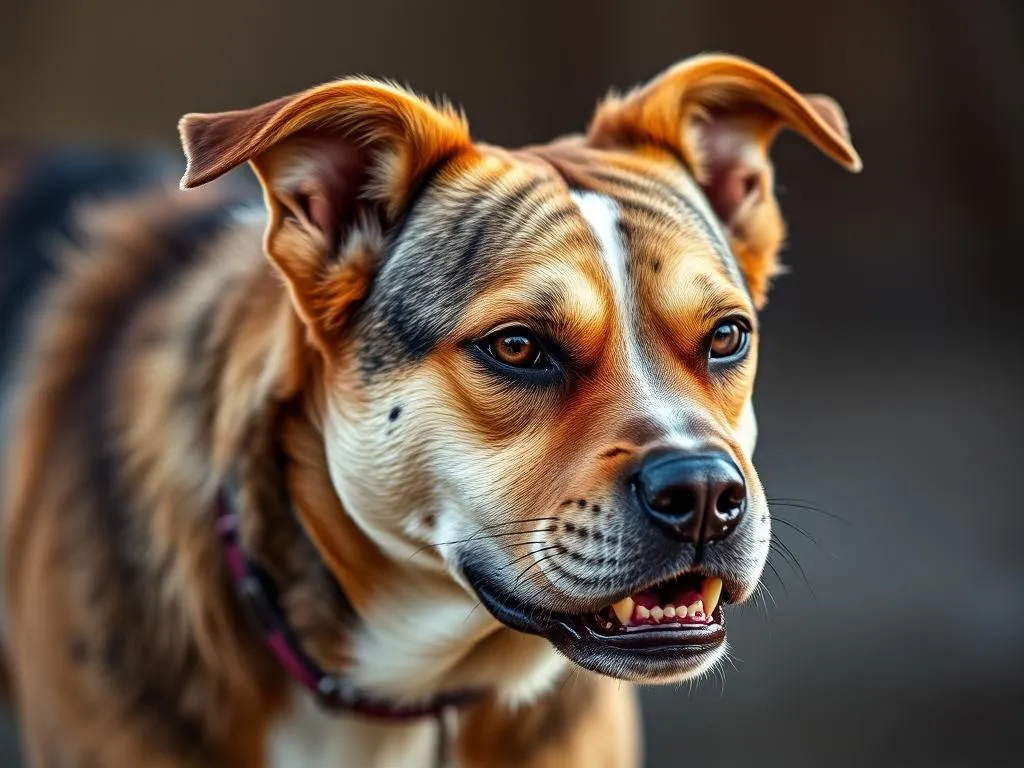
Understanding aggressive dog breeds is crucial for both current and prospective dog owners. These breeds often face a stigma that can lead to misconceptions about their behavior and the responsibilities of their owners. By delving into the nature of canine aggression, we can better appreciate these animals and learn how to coexist safely and harmoniously.
Understanding Aggression in Dogs
What is Canine Aggression?
Canine aggression refers to a range of behaviors exhibited by dogs that are intended to assert dominance, defend territory, or react to perceived threats. There are several types of aggression, including:
- Fear-Based Aggression: Dogs may react aggressively when they feel threatened or scared.
- Territorial Aggression: This occurs when dogs perceive a threat to their home or personal space.
- Possessive Aggression: Dogs can display aggression over food, toys, or even their owners.
Myths surrounding aggressive dogs often paint them as inherently dangerous, disregarding the nuances of their behavior. In reality, aggression can be influenced by various factors and does not solely define a breed’s temperament.
Factors Contributing to Aggression
Several elements contribute to a dog’s aggressive tendencies:
- Genetic Predisposition: Some breeds may have traits that predispose them to aggressive behavior, but this is not an absolute indicator of behavior.
- Environmental Influences: A dog’s upbringing, including socialization and training, plays a significant role in its behavior.
- Past Experiences: Dogs that have faced abuse or neglect may develop aggressive tendencies as a defense mechanism.
Understanding these factors is crucial for responsible ownership and management of aggressive dog breeds.
Common Aggressive Dog Breeds
Overview of Aggressive Breeds
Certain breeds are perceived as more aggressive due to their physical traits, historical roles, and media portrayal. While breed characteristics can influence behavior, it is essential to remember that individual dogs may vary widely in temperament.
List of Notable Aggressive Breeds
- Pit Bull Terrier
- Overview of breed characteristics: Strong and muscular, these dogs are often loyal and affectionate with their families.
-
Common behavior traits and aggression triggers: They can become aggressive when feeling threatened or if they perceive a challenge to their status.
-
Rottweiler
- Overview of breed characteristics: Confident and powerful, Rottweilers are known for their protective instincts.
-
Common behavior traits and aggression triggers: They may display aggression when protecting their territory or family. Proper training is essential to mitigate this behavior.
-
German Shepherd
- Overview of breed characteristics: Highly intelligent and versatile, German Shepherds are often used in police and military roles.
-
Common behavior traits and aggression triggers: They can be territorial and protective, especially without proper socialization and training.
-
Doberman Pinscher
- Overview of breed characteristics: Dobermans are known for their loyalty and protective nature, making them excellent guard dogs.
-
Common behavior traits and aggression triggers: They may show aggression if not adequately socialized or if they feel their family is threatened.
-
Chow Chow
- Overview of breed characteristics: Chow Chows are distinctive for their lion-like mane and aloof demeanor.
- Common behavior traits and aggression triggers: They can be territorial and may become aggressive if they feel their space is invaded.
Identifying Aggressive Behavior in Dogs
Signs of Aggressive Behavior
Recognizing the signs of aggression in dogs is essential for prevention and management. Common indicators include:
- Body Language: Growling, baring teeth, and a stiff posture are clear signs of discomfort or aggression.
- Situational Triggers: Aggressive behavior can be triggered by the presence of strangers, loud noises, or unfamiliar environments.
Understanding the Context of Aggression
It’s essential to differentiate between playful and aggressive behavior. For example, a dog may playfully bark and chase, but if it shows signs of stiffening or growling, it may be entering an aggressive state. Contextual understanding can aid in preventing incidents.
Managing and Training Aggressive Dogs
Importance of Early Socialization
Early socialization is critical for all dogs, especially those breeds known for aggressive tendencies. The critical period for socialization occurs between three and fourteen weeks of age. During this time, exposing your dog to various environments, people, and other animals can help shape its future behavior positively.
Effective Training Techniques
Implementing effective training techniques is essential for managing aggressive behavior:
- Positive Reinforcement Methods: Rewarding good behavior with treats, praise, or play helps encourage desired conduct.
- Commands and Obedience Training: Basic commands establish a foundation for good behavior. Teaching “sit,” “stay,” and “leave it” can be particularly beneficial.
- Consultations with Professional Trainers: If aggression persists, seeking guidance from professional trainers or behaviorists can provide tailored strategies for your dog.
Safety Precautions for Owners and Others
Safety must always come first when dealing with aggressive dog breeds. Consider the following precautions:
- Use of Muzzles and Harnesses: Muzzles can provide a safe way to prevent biting during training or socialization. A well-fitted harness can also give you better control.
- Establishing a Secure Environment: Create a safe space for your dog where it can retreat when feeling stressed or overwhelmed.
Living with Aggressive Dog Breeds
Creating a Safe Home Environment
Designing a safe environment is crucial for living with aggressive dog breeds. This can include:
- Designating Safe Spaces: Establish areas in your home where your dog can retreat if it feels threatened or anxious.
- Managing Interactions with Children and Other Pets: Supervise all interactions and educate children on approaching dogs safely to minimize risks.
The Role of Ongoing Training and Behavior Monitoring
Training should not stop after the initial obedience lessons. Continuous training and behavior monitoring are vital for maintaining a well-behaved dog:
- Importance of Continuous Training: Regular practice of commands and socialization can reinforce positive behavior.
- Keeping a Close Eye on Behavior and Triggers: Being aware of your dog’s behavior can help you identify triggers and prevent aggressive incidents.
Community Resources and Support
Utilizing community resources can be beneficial for both dog owners and their pets. Look for local trainers, behaviorists, and support groups that focus on managing aggressive behavior. Engaging with others can provide valuable insights and shared experiences.
Misconceptions and Advocacy
Debunking Myths Surrounding Aggressive Breeds
Stereotypes about aggressive dog breeds often stem from sensationalized media portrayals. It is vital to address these myths and focus on responsible ownership. Education about dog behavior can help shift perceptions and promote understanding.
Advocating for Breed-Specific Legislation
Breed-specific legislation often unfairly targets certain breeds without addressing the root causes of aggression. Advocating for education and responsible ownership can lead to better outcomes for dogs and their owners. Emphasizing the importance of training and socialization over discrimination is crucial in promoting better community practices.
Conclusion
Understanding aggressive dog breeds requires a comprehensive approach that considers behavior, training, and responsible ownership. By educating ourselves and others about the factors influencing aggression, we can develop better relationships with these breeds, ensuring a safer environment for everyone. It’s essential to promote responsible ownership and support initiatives that prioritize canine welfare.
Educating ourselves further about dog behavior and training can significantly impact our interactions with all breeds, transforming misconceptions into informed understanding.









